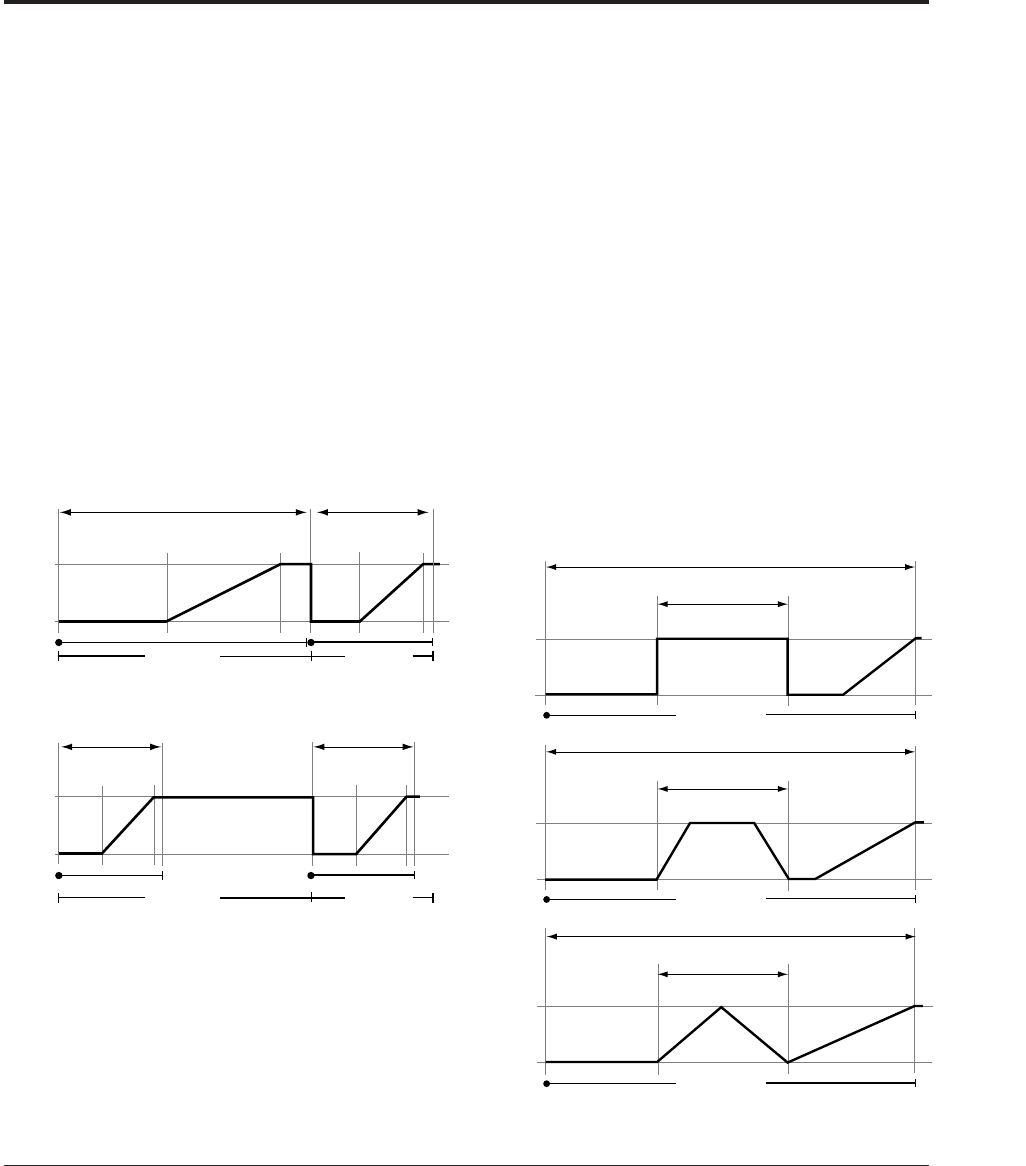
Appendices Random Weighting Curves
961
“GE Type” 3: Real-Time
Since the duration of the note is determined by
actually playing the keyboard, Bend Group “Length”
25: Note Duration is not available for this GE Type,
and will act the same as 7: 16th if selected. The other
Bend Length settings operate as described above.
The Different Bend Shapes
Bend
When the “Bend” Shape is selected in the Shape
Parameter, the Start Parameter specifies where in the
note’s duration the bend will start, and the End
Parameter specifies where in the note’s duration the
bend will end. The following diagram illustrates the
resulting bend when the shape is “Bend,” and also the
difference between Note Duration and Fixed/Note
Values settings.
Hammer, Hammer Bend
When the “Hammer” or “Hammer Bend” Shape is
selected, the Start and End Parameters function a bit
differently. Start specifies where in the note’s duration
the 1st bend will start and go to the bend’s highest
value (Hammer-On), and End specifies where in the
note’s duration the 2nd bend will start and return to
zero (Hammer-Off). Additionally, a 3rd bend is
generated for Hammer Bends.
Also, when the “Hammer” or “Hammer Bend” Shape
is selected, the Width Parameter is available. Width is a
percentage of the amount of time between the Start
and End points, and therefore controls how long the
Hammer-On and Hammer-Off bends will be. You can
also think of Width as being the amount of time the
bend stays at it’s highest value before returning to
zero. A Width of 100% gives you a Square Shape, while
a Width of 0% gives you a Triangle Shape.
In a Hammer Bend, the 3rd bend starts at a point in the
note’s duration following the End setting, and is
determined by a ratio of the Width. Even when Width
is at 100% and the Hammer-On and Hammer-Off
Bends are instantaneous, the final 3rd bend will still be
an audible bend.
The following diagrams illustrate the shape of a
Hammer Bend. A Hammer is the same thing, without
the final 3rd bend at the end. Hammers and Hammer
Bends follow the same behavior with Duration as
discussed in the previous section Length Of Bends.
Random Weighting Curves
Weighting Curve Shapes and Their Effects
When using the various grid-based Patterns, more
than one value selected in a column creates a “pool” of
random choices. Different areas of the pool may be
selectively favored using a Weighting Curve. 4
different shapes are available, which act to favor
certain areas of the pool over others when each
random choice is made. The actual shape of the curve
depends on the setting of the “Factor” parameter.
Exponential (Exp)
With a positive Factor (+), choices will be
exponentially weighted towards the upper values in
the pool. With a negative Factor (-), choices will be
exponentially weighted towards the lower values in
the pool.
Logarithmic (Log)
With a positive Factor (+), choices will be
logarithmically weighted towards the upper values in
the pool. With a negative Factor (-), choices will be
exponentially weighted towards the lower values in
the pool.
+12 Bend with Note Duration
+12 Bend with Note Value/Fixed (ms) Duration 100ms
100% 100%
100% 100%
Bend +12
Bend 0
Bend +12
Bend 0
Quarter Note Eighth Note
Quarter Note Eighth Note
Start
40%
End
90%
End
90%
Start
40%
End
90%
End
90%
Start
40%
Start
40%
100ms
100ms
+12 Bend Hammer Bend with various Widths
100%
100%
100%
100%
Width 100%
Width 50%
100%
100%
Width 0%
Bend +12
Bend 0
Bend +12
Bend 0
Bend +12
Bend 0
Note Duration
Note Duration
Note Duration
Start
30%
End
65%
Start
30%
End
65%
Start
30%
End
65%


















